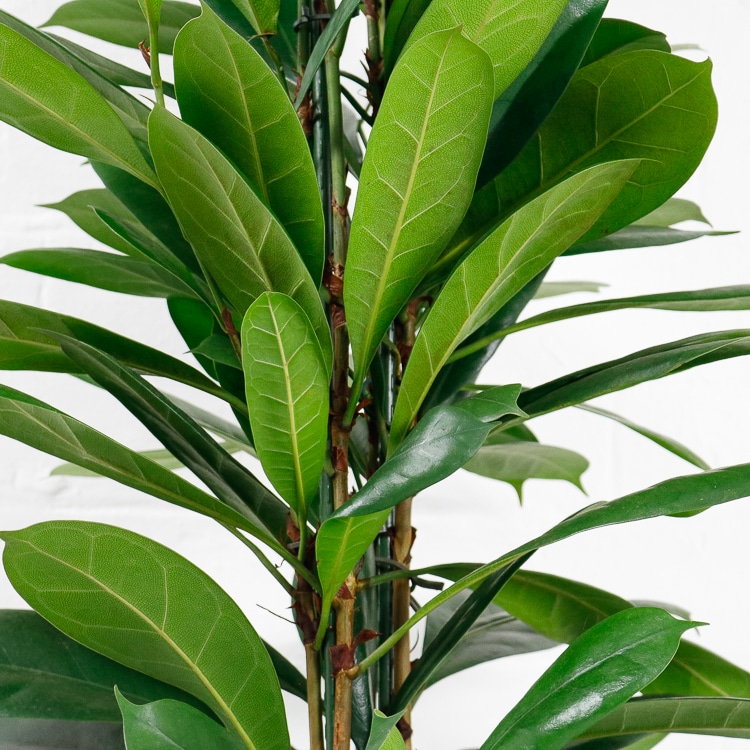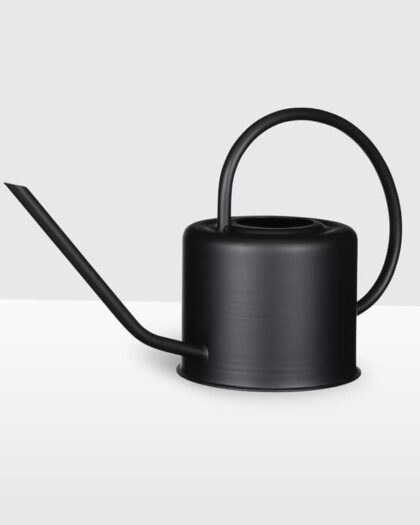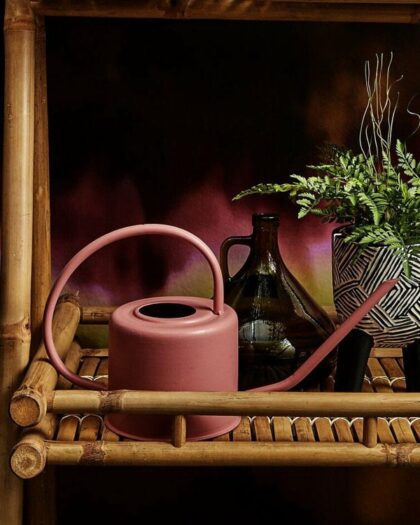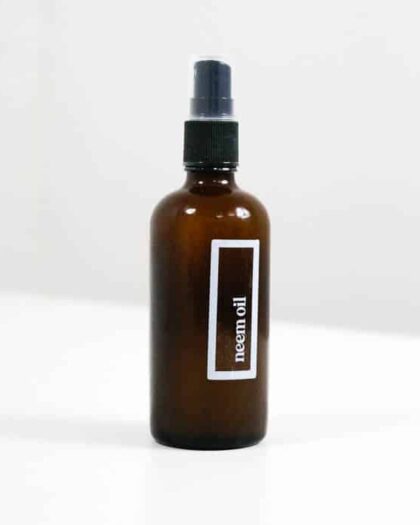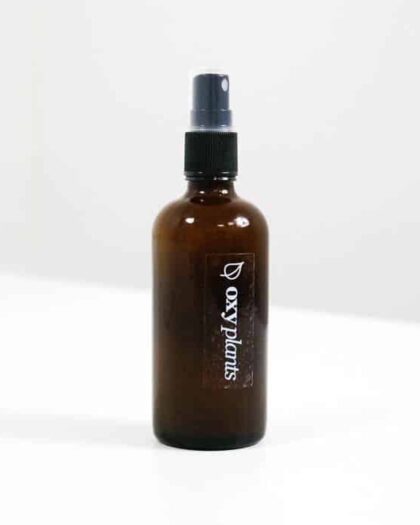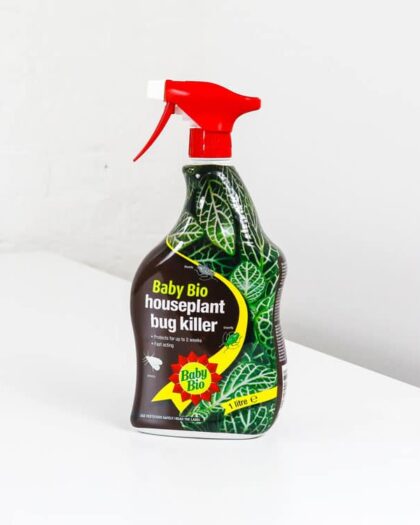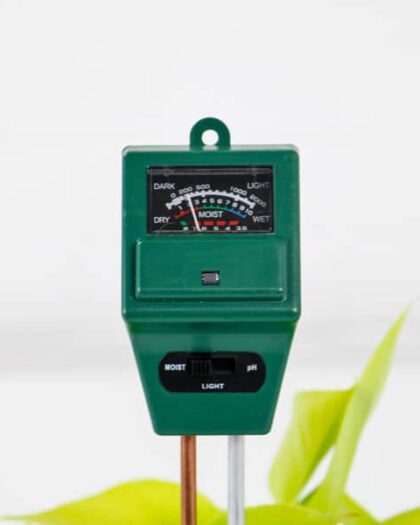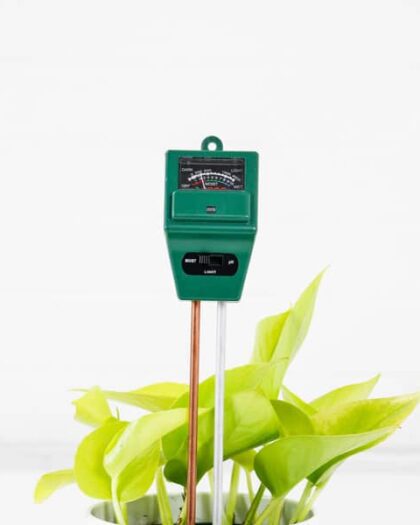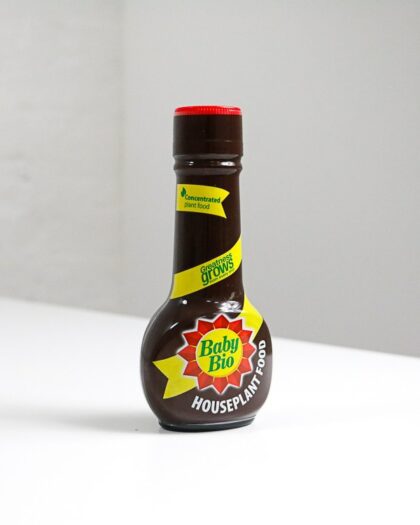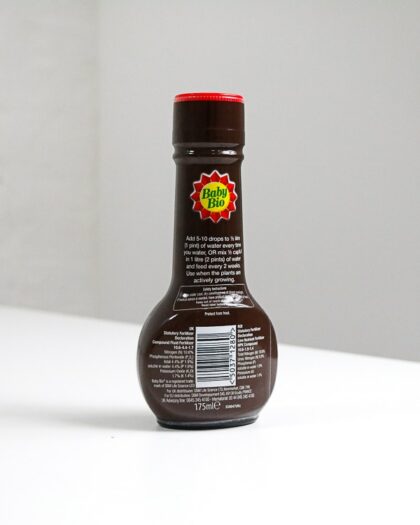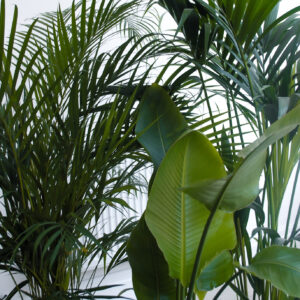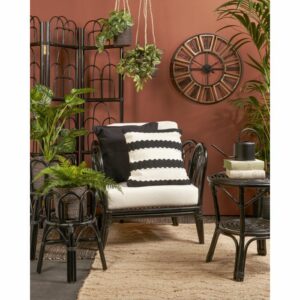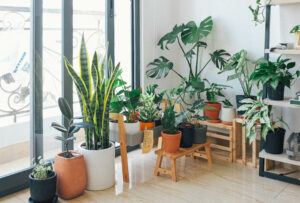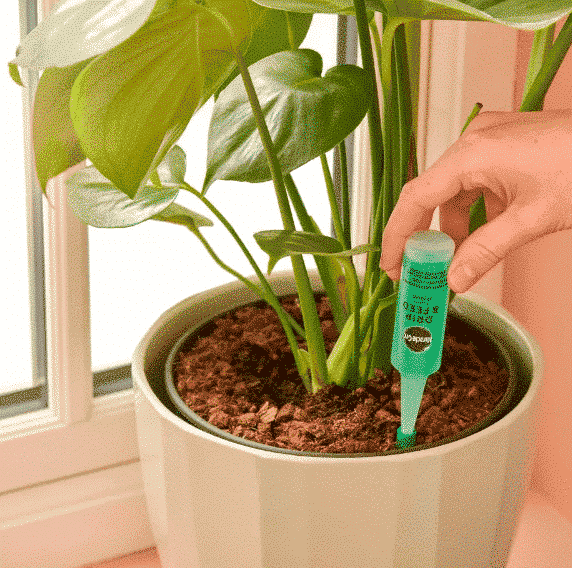What's in this indoor plant care guide
About The African Fig Tree
Native to the tropical rainforests of Africa, the African Fig Tree has quickly established itself as one of the most popular houseplants on the market today!
This indoor tree is known for its rounded, leathery leaves that can help to decorate any room in your house.
In the summer months, mature African Fig Trees may even produce reddish figs that are edible.
Why not bring a touch of exotic Africa into your home?
Botanical Name
Nicknames
Air Purification Qualities
Child & Pet Safe?
Sun Exposure
Soil Type
Well draining, nutrient rich
Hardiness Zones
How to care for The African Fig Tree
Light & Location
In Africa, this tree would naturally grow on the rainforest’s floor. Therefore, it would likely be covered by the canopy of larger trees. To replicate this, place your African Fig Tree in a bright room, but out of direct sunlight.
A room with a South-facing window would be perfect. Also, be sure to rotate your tree around every week or two. This will distribute sunlight evenly around your tree, allowing all the leaves to photosynthesise. You will be helping to prevent any leaves from wilting and falling off.
Watering
The African Fig Tree loves to sit in moist soil. After all, it is native to rainforests. When the top inch of soil becomes dry, it’s time to water! Be sure to use the finger test or our trusty soil & light tester. As a general rule, the African Fig Tree will need watering once every ten days in during the Summer months.
However, be sure to adapt your watering routine accordingly, depending on changes in weather. During heatwaves, be prepared to water as much as once a week. In Winter, reduce your watering schedule to bi-weekly. You be the best judge of your soil moisture levels!
Temperature & Humidity
The African Fig Tree loves a warm and wet environment. Ideally, you will want to keep this houseplant in a room between 16 and 24 degrees celsius. Any lower, and your plant will begin to suffer!
To keep your African Fig Tree on top form, give it a mist once a week. You can use one of our plant misters. You could also place your houseplant in the shower, which will help to remove any dust off your leaves and maximise photosynthesis.
Be sure to keep your African Fig Tree away from any heaters or radiators in the winter months. This will help to minimise any fluctuations in temperature that are likely to hurt your tree in the long run.
Soil
As the African Fig Tree is able to produce fruit, it requires a soil that is dense with essential nitrogen and carbon-based nutrients
You can check out some of the soil substrates we have availble to help increase these factors in your potting mix.
As the African Fig loves rich organic matter, it is used to sitting in fairly acidic soils (pH 5.5-6).
Fertiliser
During the growing season, you will want to fertilise your African Fig Tree bi-weekly. As this plant needs a bushy foliage, sturdy stem, and strong roots, make sure to use a well balanced fertiliser. MiracleGrow Pump & Feed would be perfect.
If you’re using your own fertiliser, be sure to dilute it with plenty of water. You NEVER want to scorch your houseplant’s roots.
Why not have a look at our range of houseplant fertilisers?
Pruning
If you want to keep your African Fig in tip top shape, then pruning is essential. Using sterilised pruning shears, cut away any dead leaves. This tree is also known to bleed its sap. After you have pruned your tree, be sure give your tree’s trunk a quick wipe. This will help to prevent any infections. A clean dust cloth will do just fine!
Propagating
Africans have been propagating this plant as far back as 5000 BC. Providing you have some empty jars and some rooting powder, there is no reason you cannot do the same!
You can propagate your Fig Tree by taking a cutting and placing it in your test tube with water. It should take a couple of months to develop roots strong enough to be repotted. However, you can reduce this using rooting powder.
Potting and Repotting
Check your African Fig’s roots every year. If the roots can be seen touching, or even growing beyond, the bottom of your pot then it is time to repot. When it is time to repot, be sure to choose a nursery pot with plenty of room to grow.
Tools to help care for your African Fig Tree
-
Mica Decorations – Metal Watering Can
From £9.99 Select options This product has multiple variants. The options may be chosen on the product page -
Neem Oil
From £5.99 Select options This product has multiple variants. The options may be chosen on the product page -
Baby Bio Houseplant Bug Killer 1L
£10.99Original price was: £10.99.£8.99Current price is: £8.99. Add to basket -
Baby Bio Houseplant Food
£4.99Original price was: £4.99.£3.99Current price is: £3.99. Add to basket
Common Problems
Unfortunately, the African Fig Tree is susceptible to many of the common pests and diseases we have in the UK. However, with this handy list you’ll know exactly what to look out for!
Common pests & plant diseases
The African Fig Tree is prone to infections from: mealybugs, aphids, spider mites, scale, thrips, waterfall, and blackfly. Should your plant become infected, be sure to isolate it from your other houseplants and teat quickly with neem oil.
Root Rot
Root rot occurs when your houseplant sits in water-logged soil for too long. If this occurs, then, you’re watering too frequently.
Root rot can make itself known in a number of ways. If your African Fig’s stem is looking mushy, or it’s leaves are yellowing, then it is time to act.
Take your plant out of its soil, and repot in a dry potting mix. Hold off on the watering for a couple of days.
Browning Leaves
If the leaves are beginning to brown on your African leaves, then this could be indicative of a number of problems.
This could be a sign of too little sun, no misting, and not enough water. To treat, give your African Fig Tree a healthy watering and misting. Also move it into a slightly sunnier spot in your home.
Cold Tap Water & Chemicals
The African Fig Tree is very sensitive to the temperature of (and chemicals in) tap water. If you live in the South of England, or an area in the world known for having hard water, you may have more luck watering your Areca with collected rain or distilled water.
In the UK, tap water contains small levels of fluoride, chlorine, nitrates, and arsenic. Whilst these chemicals help to purify our water and make it drinkable for humans, these can also damage the health of your Fig Tree.
To be on the safe side, run your tap water through a filtration system (Berkey, Brita Filter etc.) and allow it to warm to room temperature before putting in your soil. This will help to keep your tree happy and healthy.
FAQ's
What is the best room for my African Fig Tree?
Any room with a bright, South-facing window and fairly constant will be perfect. Somewhere like a living room, or bedroom would be perfect!
Is my African Fig Tree safe with children or pets?
No. The Africa Fig Tree is toxic to pets and humans as it contains latex in its stem. If you have some inquisitive toddlers or furry friends, it may be best to keep this indoor houseplant upstairs or, at the very least, out of reach.
Can my African Fig Tree live outside?
In the UK, you’ll struggle to keep ayour African Fig alive outside. In the cold weather, your tree will likely lose its leaves. Although it’s resilient to many conditions, a British winter would almost certainly kill it off. No one wants that!
